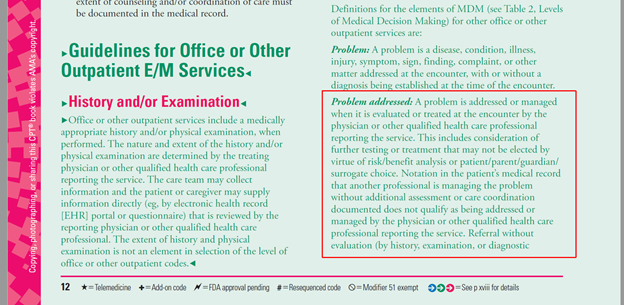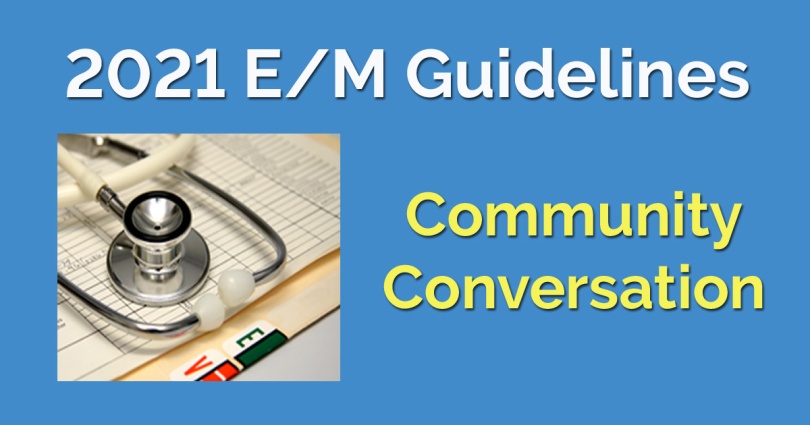Our goal in this blog series is to provide a forum regarding topics around the 2021 E/M Guidelines and to encourage community conversation on how the new guidelines might be applied. We’ll provide scenarios and expert opinion for your consideration, and we hope you’ll feel free to contribute to the thoughts and ideas presented by fellow auditors, coders, billers, CDI professionals, compliance professionals, payment integrity and risk managers.
The AMA has provided a definition for “Problem addressed” in the 2021 AMA CPT(R) Manual.
“Problem addressed: A problem is addressed or managed when it is evaluated or treated at the encounter by the physician or other qualified health care professional reporting the service. This includes consideration of further testing or treatment that may not be elected by virtue of risk/benefit analysis or patient/parent/guardian/surrogate choice.”
More importantly, the definition includes this statement.
“Notation in the patient’s medical record that another professional is managing the problem without additional assessment or care coordination documented does not qualify as being addressed or managed by the physician or other qualified health care professional reporting the service.”

Many EHR patient records systems automatically pull the patient’s “problem list” and their complete “medication list” into a new encounter. This information may not be considered in the EHR’s 2021 guidelines unless notation is made about an evaluation or treatment of the problem(s), additional assessment needed or care coordination of the issue.
Though the new encounter may have a complete “problem list,” sufficient documentation is needed to note which problem(s) affects the MDM for the encounter, and what the risk of morbidity is. In a list of problems or multiple providers, which problem(s) are being managed by the provider during the encounter?
The medication list is another area that could draw questions. Experts recommend there should be notes indicating who is managing which medications in the case of multiple providers managing care. Specifically, it is best to show which medication is being managed by the physician for the encounter. The statement “continue meds” is not a sufficient indication of management.
Taken together, these elements may impact the risk associated with the care provided by the provider to manage the patient’s condition(s). These elements support the basis for the level of service provided during the encounter and the E/M code billed.
Is your provider’s documentation clear enough to note the problems addressed and the intensity of service provided in the encounter?
What types of changes would you recommend to the provider?

